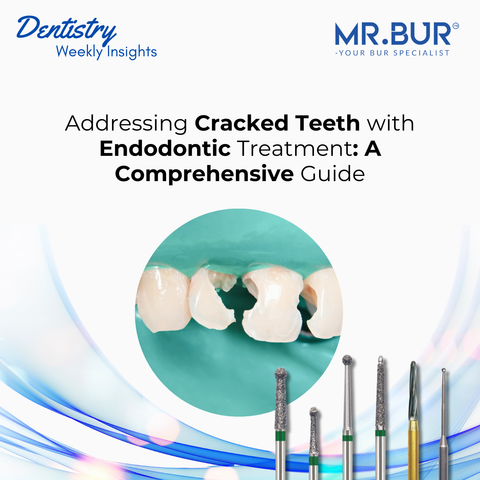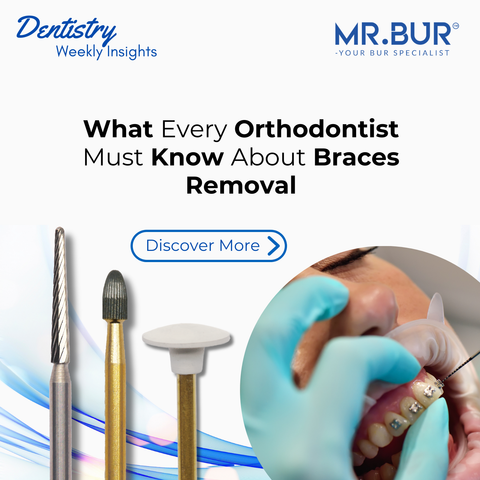Wisdom teeth, also known as third molars, are the last set of molars to emerge in a person’s mouth, typically between the ages of 17 and 25. While they were once essential for grinding tough food in our ancestors' diets, modern humans often lack the jaw space to accommodate these additional teeth. This can lead to issues such as impaction, crowding, and infection, making extraction necessary in many cases.
What to Expect in This Article:
- Types and Positions of Wisdom Teeth
- Which Wisdom Teeth Need Extraction
- The Wisdom Teeth Extraction Process
- Tools Used in Extraction
- Recovery After Extraction
Understanding Wisdom Teeth: Types and Positions
Wisdom teeth can develop in various positions, and these positions largely determine whether extraction is required. Fully erupted wisdom teeth are teeth that have fully emerged into the dental arch and align with the other teeth. These wisdom teeth can often be kept if they are healthy, easy to clean, and do not cause any crowding. However, they should still be monitored through regular dental checkups to ensure they don’t cause future problems.
Partially erupted wisdom teeth, on the other hand, are covered by gum tissue and are more difficult to clean. This can make them more prone to infection, particularly due to a condition known as pericoronitis, where bacteria collect under the gum flap. In many cases, partially erupted teeth are recommended for removal to avoid further complications. The most complex cases involve impacted wisdom teeth, which remain trapped in the jawbone or gums. These teeth may grow at various angles, such as mesioangular, distoangular, vertical, or horizontal, potentially leading to pain, infection, damage to adjacent teeth, or cyst formation. In these situations, surgical extraction is often necessary.
Which Wisdom Teeth Should Be Extracted?
Deciding whether to extract wisdom teeth depends on their position and the potential risks they pose. Impacted teeth that are trapped beneath the gums or in the jawbone typically require extraction, especially if they cause pain, infection, or damage to neighboring teeth. Similarly, partially erupted teeth can easily trap food and bacteria, leading to chronic gum infections, and are often recommended for removal. Teeth that cause crowding by pushing other teeth out of alignment, especially after orthodontic work, should also be extracted to preserve the alignment of the remaining teeth.
Conversely, fully erupted and properly aligned wisdom teeth can generally be kept if they are healthy, do not interfere with other teeth, and are easy to clean. Regular dental checkups are essential to monitor their condition and prevent future problems.
Wisdom Teeth Extraction: Methods and Tools Based on Position
The method of extraction and the tools used depend on the tooth's position and condition. For fully erupted teeth, the procedure is relatively simple. Local anesthesia is administered to numb the area, and the dentist uses elevators to loosen the tooth from the socket before extracting it with forceps. This method is quick and typically straightforward.
For partially erupted teeth, the process is more complex:
Step 1: Administer Local Anesthesia
- The dentist numbs the area around the wisdom tooth to ensure patient comfort.
- An anesthetic syringe with a fine needle is used to inject the local anesthetic.
Step 2: Incision in the Gum
- If part of the wisdom tooth is still covered by gum tissue, a small incision is made to expose the tooth fully.
- A scalpel or surgical scissors is used to make a precise cut in the gum.
Step 3: Loosen the Tooth
- The dentist uses instruments to gently loosen the tooth from the socket, detaching it from the surrounding tissues.
- Elevators are applied to lift the tooth and loosen the periodontal ligament.
Step 4: Extract the Tooth
- Once the tooth is sufficiently loosened, it is extracted from the socket.
- Extraction forceps are used to firmly grasp and remove the tooth from the jaw.
Step 5: Sectioning the Tooth (If Necessary)
- If the tooth is large or difficult to extract whole, it is cut into smaller pieces to facilitate removal.
- Mr. Bur’s Diamond Surgical Tooth Sectioning Diamond Bur is used to section the tooth.
Step 6: Close the Incision
- After extraction, the gum is sutured to promote healing.
- Absorbable sutures are placed to close the incision and allow the gum to heal without further intervention.
The most complex procedure is for impacted teeth:
Step 1: Administer Anesthesia
- Local anesthesia is administered for simple impactions, while general anesthesia or IV sedation may be used for more complex extractions.
- Anesthetic syringe for local anesthesia, or IV setup for sedation or general anesthesia.
Step 2: Incision in the Gum
- An incision is made to access the impacted tooth, which is still buried beneath gum tissue or bone.
- A scalpel is used to make a clean incision through the gum, exposing the tooth and surrounding bone.
Step 3: Remove Bone (If Necessary)
- In cases where the tooth is embedded beneath the bone, a portion of the bone must be removed to reach the tooth.
- Mr. Bur Tungsten Carbide Surgical Bone Cutter is typically used to remove bone in a controlled manner.
Step 4: Section the Tooth
- In deeply impacted teeth, the dentist or surgeon sections the tooth into smaller pieces to remove it without causing excessive trauma to the jaw or gum tissue.
- Mr. Bur Tungsten Carbide Surgical Tooth Sectioning Carbide burs can be used to section the tooth into smaller fragments, making it easier to remove.
Step 5: Extract Tooth Fragments
- The dentist removes the sectioned fragments one by one, ensuring that all parts of the tooth are extracted from the socket.
- Surgical forceps are used to grasp and remove each tooth fragment carefully from the socket.
Step 6: Clean the Socket
- After the tooth is removed, the socket is cleaned to remove debris, blood, and bone fragments to reduce the risk of infection.
- The socket is irrigated with sterile saline solution to cleanse the area.
Step 7: Suture the Gum
- Once the tooth has been removed and the socket cleaned, the gum tissue is sutured to close the incision and promote healing.
- Absorbable sutures are typically used to close the incision, ensuring that the tissue heals properly without needing to be removed later.
Recovery After Wisdom Teeth Extraction
The recovery process following wisdom teeth extraction depends on the complexity of the procedure. For simple extractions, recovery time is relatively short, typically taking just a few days. Discomfort is minimal and can usually be managed with over-the-counter pain relievers. For surgical extractions, recovery may take 1 to 2 weeks, with swelling, bruising, and discomfort being normal during the first few days. It’s important to follow post-operative care instructions, including avoiding straws and hard foods, to prevent dry socket, a painful condition where the blood clot at the extraction site becomes dislodged.
Final Thoughts
Wisdom teeth extraction is often necessary for impacted or partially erupted teeth to prevent complications such as infection or crowding. While fully erupted teeth may not always need removal, regular monitoring is essential. Using the right tools, like Mr. Bur diamond surgical burs for sectioning or Mr. Bur tungsten carbide burs for bone removal, ensures a precise and efficient procedure, leading to smoother recovery and minimizing post-surgical complications. Understanding the extraction process allows patients and dental professionals to make informed decisions for better oral health.
At MR. BUR United Kingdom, our strict adherence to relevant regulations guarantees our commitment to quality and safety.
You may also like:
Diamond Surgical Burs: Enhancing Precision in Complex Dental Procedures
Diamond Burs, Carbide Burs, Surgical & Lab Use Burs, Endodontic burs, IPR Kit, Crown Cutting Kit, Gingivectomy Kit, Root Planning Kit, Composite Polishers, High Speed Burs, Low Speed Burs
Subscribe our newsletter now!





